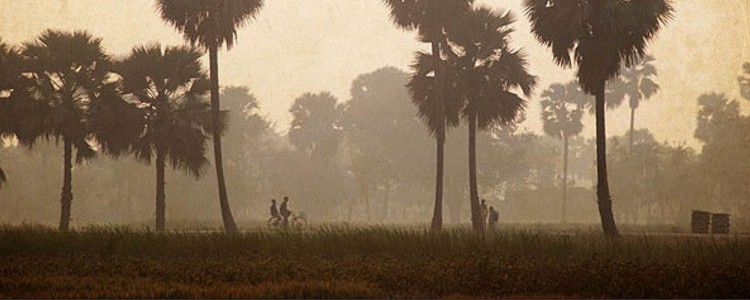A. F. Harrold’s “The Song from Somewhere Else”
It was music of a short she’d never heard before.
She was suddenly filled with shoals of fish, darting and moving like one great whole, darting and flowing this way and that, darting and flashing, hundreds and hudnreds of silver fish all moving as if they shared one brain. That was what she saw as she heard this faint, distant music.
…
No piece of music she’d ever heard on the radio or in the background of a TV show had ever made her feel so special, had made her feel so cared for, so improved.
…
The smell of the house, the foresty smell, was stronger now. The air was cool on her face. She heard birdsong, smelt moss, rivers, evening.
…
But it was unfair, wasn’t it, keeping such beautiful music, such kind and forgiving music, such perfect and clear and mysterious music, to himself?
It wasn’t his music now though, was it? It was hers. It was in her ears, in her brain, sparking electricity through synapses in ways that made her unable to resist it. She was hooked like a fish.
A. F. Harrold’s The Song from Elsewhere is about Francesca Patel or Frank as she is often called and her unlikely friendship with her classmate Nick Underbridge, who is often shunned by others for various reasons, probably because he is a large child, quiet and smells odd. During the summer break Nick rescues Frank from a bunch of boys who have been bullying her for more than a year now. Afterwards Frank accompanies Nick to his house where she encounters this extraordinarily soothing piece of music.
The Song from Elsewhere may be about fantastical creatures and wormholes or leechways opening a passage to another dimension but is also about friendships, exploring boundaries, relationships and bullies. It is an astonishing novel for young readers with a touch of magic realism. Although having said that the novel is positioned well in that space for impressionable minds for whom imaginary friends, elements of the fantastic and other dimensions run in continuum with their reality. It is beautifullly illustrated by Levi Pinfold.
The longlisting of this book for the CILIP Award 2018 is well deserved.
A. F. Harrold The Song from Somewhere Else ( Illustrated by Levi Pinfold) Bloomsbury, London, 2016. Pb. pp. Rs 299
22 February 2018


